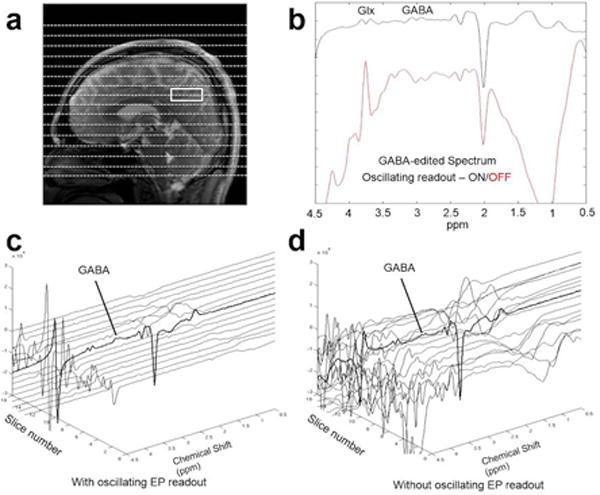Figure 3.

Beneficial effects of an oscillating readout gradient. (a) MRI image showing selected single voxel. (b) improved MEGA-SPECIAL spectra w/wo the addition of an oscillatory z-readout gradient for suppression of out-of-voxel (OVS) signals (along the z-axis) that adversely contribute to single-voxel spectra. OVS signals are visualized by adding z phase encoding (16 slices), and stack plots of the edited spectra from each slice with (c) and without (d) the oscillating readout gradient show the achievable artifact reduction. The spectrum from slice centered on the excited voxel is highlighted in BOLD. In addition to using x, y, and z selective RF pulses to define the targeted voxel, all spectra were acquired using conventional slice-selective OVS MRS suppression pulses, demonstrating the added level of suppression achievable with an oscillatory readout gradient. Parameters: editing at 1.7/7.5 ppm, TE/TR = 80/2000 ms, 256 transients, 8.5 min acquisition.
